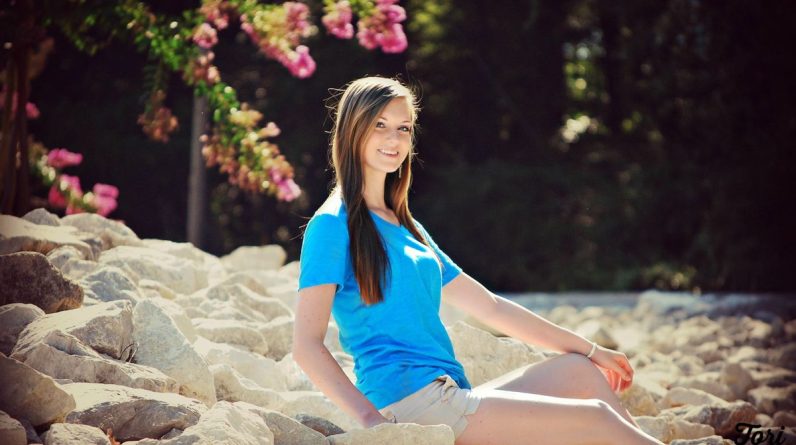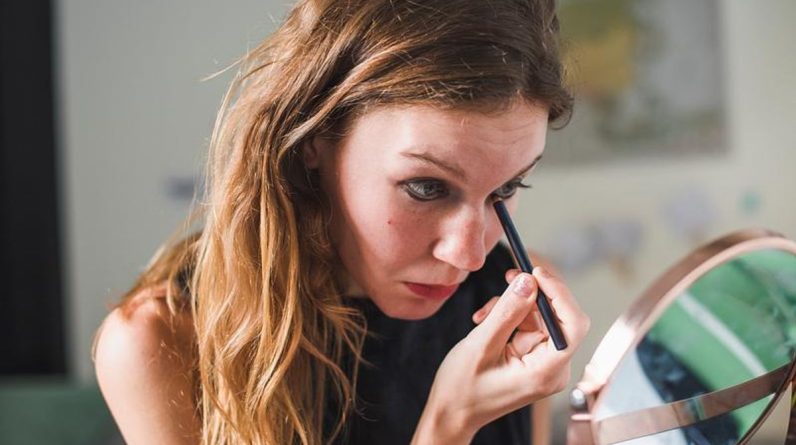Nail care is an essential part of maintaining healthy and beautiful nails. In this ultimate guide, we will explore the anatomy of nails, essential nail care tools, proper nail hygiene, tips for healthy and strong nails, and preventing and treating nail infections. Here are the key takeaways:
Contents
Key Takeaways
- Understanding the structure and function of nails is crucial for proper nail care.
- Essential nail care tools include nail clippers, files, and cuticle pushers.
- Maintaining proper nail hygiene involves washing, trimming, and moisturizing your nails.
- A balanced diet, avoiding harsh chemicals, and using nail strengtheners can promote healthy and strong nails.
- Preventing and treating nail infections requires proper hygiene and timely intervention.
Understanding the Anatomy of Nails

The Structure of Nails
The structure of nails is composed of several layers. The nail plate, which is the visible part of the nail, is made up of hardened keratin cells. Beneath the nail plate is the nail bed, which contains blood vessels, nerves, and melanocytes that produce melanin. As the nail grows, it streams down along the nail bed and adds material to the nail plate. The cuticle, a thin layer of skin, protects the area where the nail plate meets the skin. The matrix, located at the base of the nail, is responsible for nail growth. It produces new cells that push the nail forward. Understanding the anatomy of nails is essential for proper nail care and maintenance.
The Function of Nails
The function of nails goes beyond just aesthetics. Nails play a crucial role in protecting the fingertip and the surrounding soft tissues from injuries. They act as a shield, preventing any damage to the sensitive areas of the fingers. In addition, nails also provide support and stability to the fingertips, allowing for precise movements and dexterity. Without nails, simple tasks like picking up objects or typing on a keyboard would be much more challenging. It’s important to take care of your nails to ensure their proper function and health.
Common Nail Problems
Nail problems are common and can be caused by various factors. Brittle nails are a common issue that many people face. They are prone to breakage and can be caused by factors such as frequent exposure to water, harsh chemicals, and nutritional deficiencies. Moisturizing your nails regularly can help prevent them from becoming brittle.
Another common nail problem is discoloration. Nails can become yellow or brown in color due to various reasons, including fungal infections, smoking, and certain medications. If you notice any changes in the color of your nails, it is important to consult a dermatologist.
In addition to brittle nails and discoloration, nail infections are also a common concern. Fungal nail infections, bacterial nail infections, and ingrown toenails are some of the common types of nail infections. Proper hygiene, avoiding sharing nail tools, and wearing breathable shoes can help prevent these infections.
If you experience any persistent nail problems or notice any changes in the appearance of your nails, it is recommended to seek professional advice from a dermatologist.
Essential Nail Care Tools

Nail Clippers and Scissors
The cornerstone of any nail care routine lies in the precision of the basics — nail clippers and files. Invest in high-quality, durable clippers to effortlessly shape your nails. Paired with a reliable file, these tools ensure that your nails provide the perfect canvas for your desired nail art. Embrace the simplicity of a well-trimmed foundation before diving into the world of intricate designs and vibrant polishes.
Nail Files and Buffers
Nail files and buffers are essential tools in nail care. They help shape and smooth the nails, creating a perfect canvas for your desired nail art. A high-quality nail file ensures precise shaping, while a buffer promotes a shiny and healthy appearance. When using a nail file, remember to file in one direction to prevent damage to the nails. Buffing the nails helps remove ridges and imperfections, resulting in a smooth and polished finish. Incorporate nail files and buffers into your nail care routine for beautiful and well-maintained nails.
Cuticle Pushers and Nippers
Nail care is all about attention to detail, and precision tools are crucial in achieving a professional look. Cuticle pushers are your secret weapon for maintaining clean, healthy cuticles. Combine them with precision nail scissors to trim them accurately, creating the ideal backdrop for detailed nail art. These tools contribute to the aesthetics and promote the overall health of your nails, ensuring a polished finish every time.
Proper Nail Hygiene

Washing and Drying Your Nails
Keeping your nails clean is an essential part of nail care. Regularly washing your hands and gently cleaning your nails with a brush helps maintain their overall health. It is also important to dry your nails well after washing to prevent moisture buildup, which can lead to fungal infections. Additionally, applying nail and skin oil can help keep your nails hydrated and prevent them from becoming dry and brittle. Remember to trim your nails regularly to prevent them from growing too long and breaking. When filing your nails, make sure to file in one direction to avoid damaging the nail bed. Lastly, using a base coat before applying nail polish can protect your nails from damage and help the polish last longer.
Trimming and Shaping Your Nails
When it comes to trimming and shaping your nails, precision is key. Start by regularly trimming your nails to prevent them from growing too long and breaking. Remember to file your nails in one direction to avoid causing damage to the nail bed. This will help maintain the health and strength of your nails. Additionally, using high-quality nail clippers and files is essential for achieving the perfect shape. Invest in durable tools that provide a well-trimmed foundation for your desired nail art. For more detailed nail care, consider using cuticle pushers and nail scissors to maintain clean and healthy cuticles. These precision tools contribute to the overall aesthetics and promote a polished finish. Remember, taking the time to properly trim and shape your nails is the first step towards achieving beautiful and healthy nails.
Moisturizing and Protecting Your Nails
Moisturizing and protecting your nails is an important step in nail care. Hydrating your nails regularly can help prevent them from becoming dry and brittle, which can lead to breakage and damage. One effective product for moisturizing and strengthening your nails is Nail Tek Hydrate 3. This moisturizing strengthener contains Pentavitin, a unique ‘water magnet’ that helps keep your nails hydrated. By applying this product regularly, you can maintain healthy and strong nails.
In addition to moisturizing, there are other ways to protect your nails. Here are some tips:
- Avoid harsh chemicals: Chemicals found in household cleaning products and nail polish removers can be damaging to your nails. It’s important to wear gloves when cleaning and use acetone-free nail polish remover.
- Give your nails a break: Taking breaks from nail polish and acrylic nails allows your nails to breathe and recover.
Remember, proper moisturizing and protection can go a long way in maintaining the health and strength of your nails.
Nail Care for Healthy and Strong Nails

Maintaining a Balanced Diet
Maintaining a balanced diet is crucial for healthy and strong nails. Nutrition plays a significant role in promoting nail health. Ensure that your diet includes a variety of vitamins and minerals that are essential for nail growth and strength. Some key nutrients for healthy nails include biotin, vitamin E, iron, and zinc. Incorporate foods like eggs, nuts, leafy greens, and lean meats into your diet to provide your nails with the necessary nutrients. Additionally, staying hydrated by drinking plenty of water is also important for nail health.
Avoiding Harsh Chemicals
When it comes to nail care, it’s crucial to avoid harsh chemicals that can weaken and damage the nails. Look for nail products that are labeled as ‘formaldehyde-free’, ‘toluene-free’, and ‘dibutyl phthalate-free’ to minimize exposure to harmful substances. Additionally, opt for gentle nail polish removers that are acetone-free to prevent excessive drying of the nails. Remember, the health of your nails starts with the products you use!
Using Nail Strengtheners
Using nail strengtheners can be an effective way to improve the health and strength of your nails. These products are designed to provide essential nutrients and hydration to your nails, helping to prevent breakage and promote growth. Regular use of nail strengtheners can lead to stronger and more resilient nails. It is important to choose a nail strengthener that is formulated with high-quality ingredients and free from harsh chemicals. Additionally, follow the instructions provided by the manufacturer for best results. Here are some tips for using nail strengtheners:
- Apply the nail strengthener to clean, dry nails.
- Follow the recommended application frequency.
- Avoid using nail polish or other nail products while using a nail strengthener.
- Be patient and consistent with your use of nail strengtheners to see the best results.
Remember, nail strengtheners are not a substitute for proper nail care and hygiene. It is important to maintain a balanced diet, avoid harsh chemicals, and protect your nails from damage to ensure overall nail health.
Preventing and Treating Nail Infections

Fungal Nail Infections
Fungal nail infections, also known as onychomycosis, are a common condition that affects the nails. They are caused by fungi that thrive in warm and moist environments, such as swimming pools and locker rooms. Proper hygiene is essential in preventing fungal nail infections. Here are some tips to help you avoid and treat fungal nail infections:
- Keep your feet clean and dry, especially between the toes.
- Wear clean socks made of breathable materials, such as cotton or wool.
- Avoid walking barefoot in public places, especially in damp areas.
- Use antifungal sprays or powders on your feet and inside your shoes.
If you suspect that you have a fungal nail infection, it is important to seek medical advice. A dermatologist can diagnose the infection and recommend appropriate treatment options. Early treatment is crucial to prevent the infection from spreading and causing further damage to the nails.
Bacterial Nail Infections
Bacterial nail infections occur when bacteria enter the skin around the nails. These infections can cause redness, swelling, and pain. It is important to treat bacterial nail infections promptly to prevent further complications. Here are some tips to prevent and treat bacterial nail infections:
- Keep your nails clean and dry
- Avoid biting or picking at your nails
- Use clean and sharp nail tools
- Apply an antiseptic ointment to any cuts or wounds around the nails
Remember, if you notice any signs of infection, such as pus or an unpleasant odor, it is important to seek medical attention.
Ingrown Toenails
Ingrown toenails can be a painful condition that occurs when the edge of the nail grows into the surrounding skin. It is important to address ingrown toenails promptly to prevent infection and further discomfort. Here are some tips for preventing and treating ingrown toenails:
- Trim your toenails straight across to avoid rounding the corners, which can increase the risk of ingrown nails.
- Wear properly fitting shoes that provide enough room for your toes to move comfortably.
- Avoid cutting your nails too short, as this can encourage the nail to grow into the skin.
- If you already have an ingrown toenail, soak your foot in warm water with Epsom salt to help reduce inflammation and pain.
- Gently lift the edge of the ingrown nail using a clean cotton swab or dental floss to relieve pressure.
Remember, if the ingrown toenail becomes infected or does not improve with home care, it is important to seek medical attention from a healthcare professional.
Nail infections can be a frustrating and painful problem to deal with. Whether you’re looking to prevent or treat these infections, it’s important to take the necessary steps to keep your nails healthy. At Beauty Trend, we understand the importance of maintaining beautiful and healthy nails. Our website is dedicated to providing you with the latest beauty tips, trends, and more. With our expert advice and recommendations, you can discover effective ways to prevent and treat nail infections. Visit our website today to learn more and start taking care of your nails!
Frequently Asked Questions
How often should I trim my nails?
It is recommended to trim your nails every 1-2 weeks to prevent them from growing too long and breaking.
Can I file my nails in any direction?
No, it is best to file your nails in one direction to avoid causing damage to the nail bed.
What is the purpose of using a base coat?
A base coat helps to protect your nails from staining and provides a smooth surface for nail polish application.
How can I prevent fungal nail infections?
To prevent fungal nail infections, keep your nails clean and dry, avoid sharing nail tools, and wear breathable shoes.
What are the signs of a bacterial nail infection?
Signs of a bacterial nail infection include redness, swelling, pain, and pus around the nail.
How can I treat an ingrown toenail at home?
You can soak your foot in warm water with Epsom salt, gently lift the ingrown nail with a clean cotton ball, and apply an antibiotic ointment.







